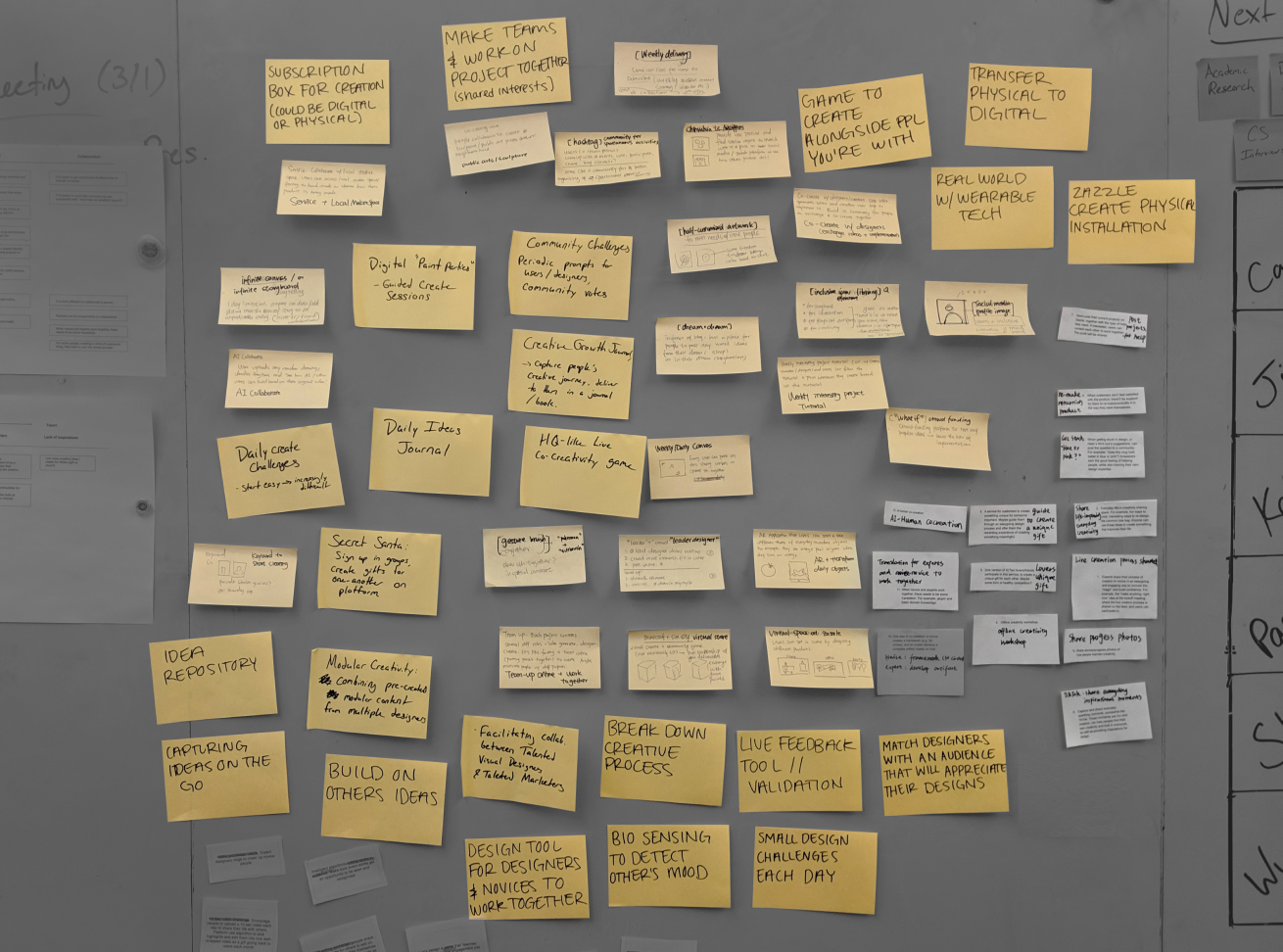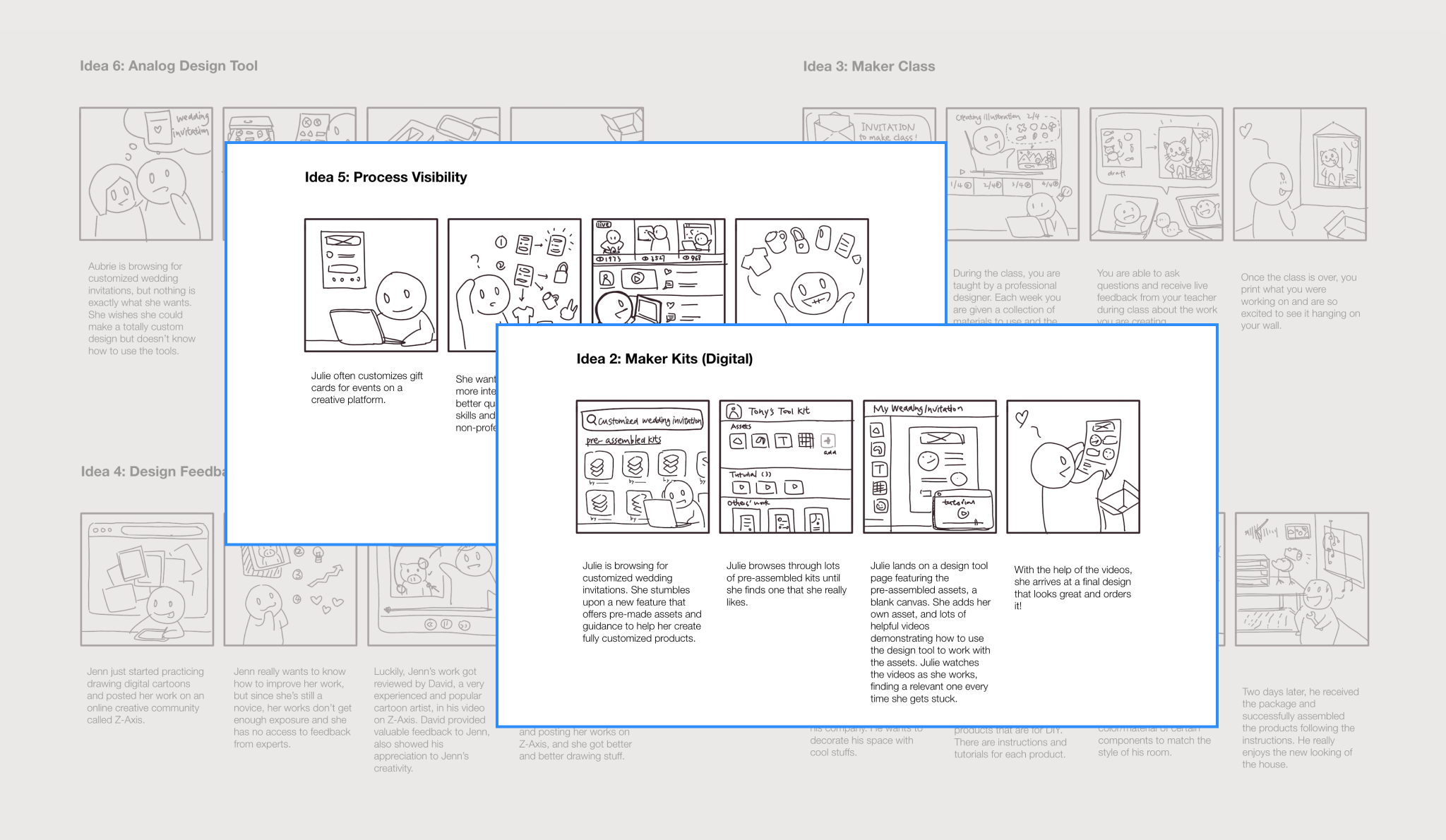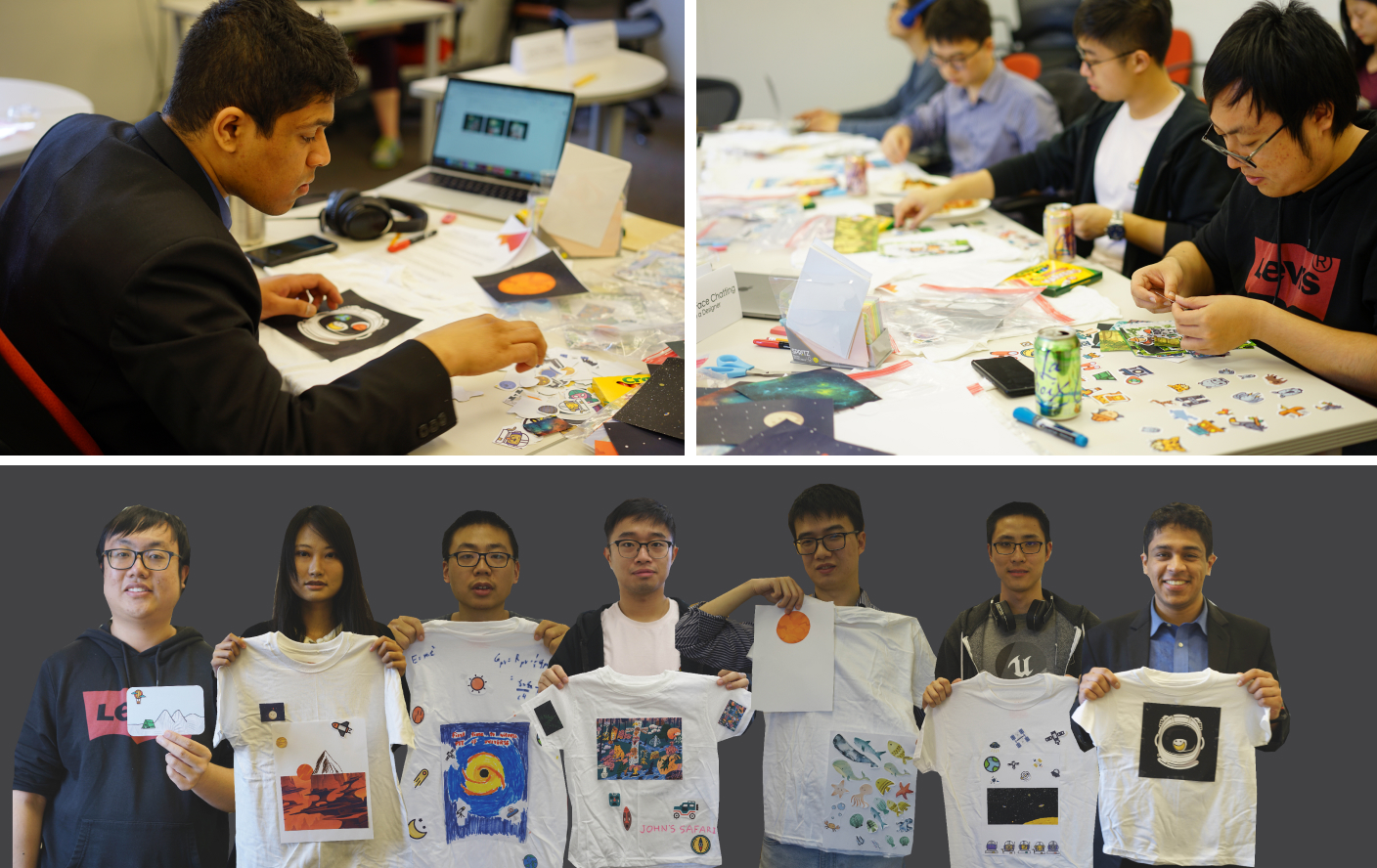01 Brainstorming
Going wide, going wild
After finishing up our generative research, we were excited to dive head first into ideation. We started out by going wide, putting all of our wildest ideas on the board and exploring how our research backed them up.

02 SPEED DATING
Testing our ideas
Among all the wild ideas, we picked some most promising ones to generate scenarios and storyboards, and executed speed dating with 22 potential users to evaluate users needs. Below are some of our selected ideas.
-
Maker Kit (Digital)
Users customize their own products with pre-designed assets on a digital platform.
-
Process Visibility
Users get to see the creation process of popular creators through videos.
-
Design Reviews
Users’ works get reviewed by popular designers in their vlogs.
-
Maker Kit (Physical)
Users receive a package with pre-assembled kits to customize physical products.
-
Maker Class
Users take realtime online class taught by designers to build creating skills.
-
Analog Design Tool
Users print out assets, customize products in the physical world, and tranform them back into digital forms.







